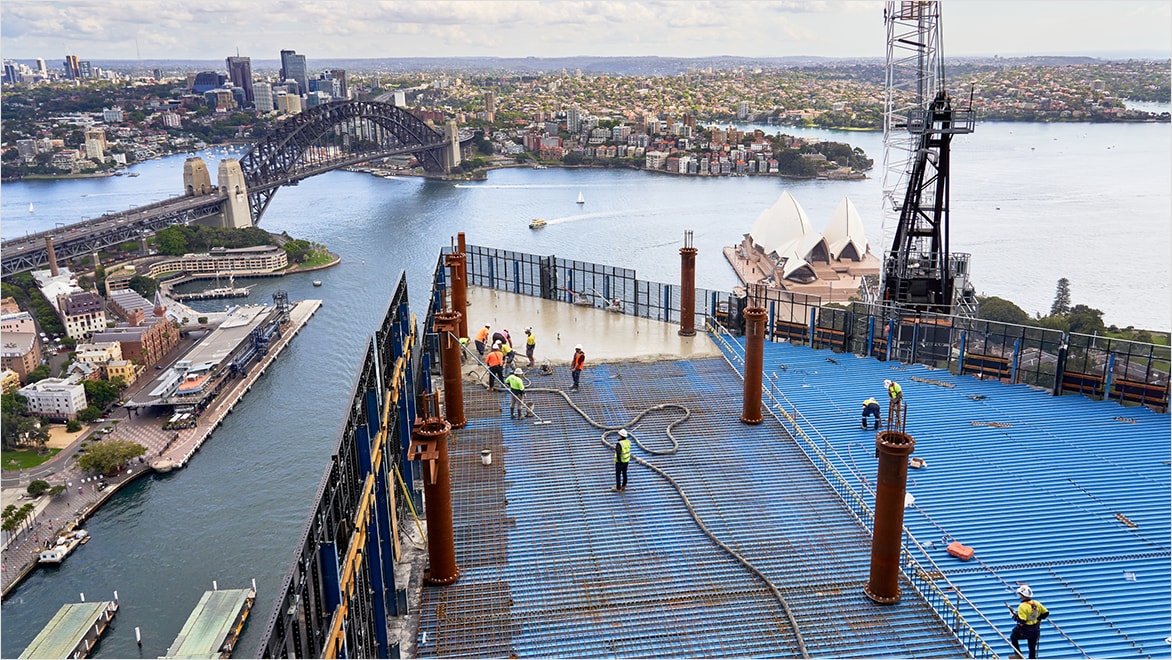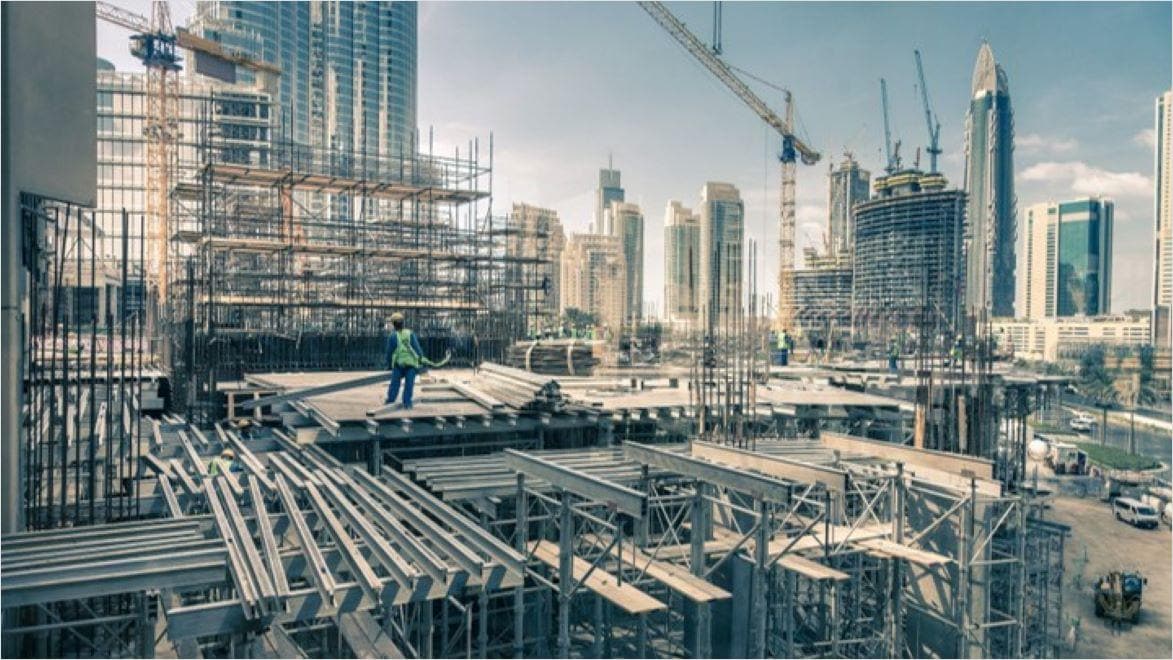& Construction

Integrated BIM tools, including Revit, AutoCAD, and Civil 3D
& Manufacturing

Professional CAD/CAM tools built on Inventor and AutoCAD
Quay Quarter Tower, BG&E
Tighter margins, increasingly complex projects—the pressure on structural engineers keeps growing.
Firms that use BIM and integrated engineering workflows adapt faster and deliver more efficiently and effectively. How? By eliminating repetitive tasks and increasing collaboration, so their teams can focus on solving complex problems.
Of BIM projects report savings on labor, collaboration, and/or materials.
Of users say BIM has made them more productive.
Report BIM reduces the risk of problems during fabrication and construction.
With BIM, structural engineering and design shifts from a siloed environment to a unified design environment. This connects multidisciplinary teams securely, providing a single source of truth. Engineers can move upstream and begin working with architects on projects at the earliest stages without sacrificing the specialized tools they need.
Structural engineers can design and analyze the behavior of a wide variety of structures, ensuring safety, reliability, and compliance with local regulations.
BIM-based tools enable engineers to drive integrated design and detailing workflows from start to finish. They can transition from design to detailed models while respecting both perspectives and following local code requirements.
BIM helps you automate and collaborate at scale. The latest advances support seamless data exchange between architecture, structural engineering, fabrication, and construction. Working with BIM can cut weeks, even months from project schedules.
Go beyond design and documentation in Revit. New features and functionality support engineering workflows for structural analytical modeling, concrete design, and steel design.
Structural analytical modeling in Revit enables engineers to coordinate between physical and analytical models and facilitates BIM-centric analysis workflows within Revit, allowing bidirectional interoperability between Revit and analysis software. See how it works in this Structural Analytical Modeling in Revit demo video.
– Michael Vogel, Principal, GRAEF
Identify errors earlier on, coordinate changes, and reduce rework down the line with a centralized 3D model where all stakeholders have visibility.
Create a single, digital source of truth that all stakeholders can access and contribute to. Connect your model via the cloud giving the entire project team access to accurate information whenever they need it.
Advanced analysis plus parametric design tools support optioneering and optimization from concept through shop drawings.
Eliminate repetitive tasks by automating processes to reach optimized and detailed design solutions faster.
Working live in a single, shared Revit model makes catching errors exponentially easier.
LERA uses integrated engineering tools in Revit to optimize designs and eliminate repetitive tasks. The results have been transformative firm wide.
GRAEF engineers design, analyze, and detail in Revit, which saves time and builds skills.
B&GE's mastery of integrated engineering has elevated its market position and opened the door to higher profile projects.
Gate Precast helped museum designers create a non-repeating pattern for a 350-panel facade using only 12 molds.
With its audacious floating form, Dubai's Museum of the Future might be the most complex building ever made. One carried from concept to construction on the back of BIM.
– Mo Wright, Marketing Director, Gate Precast
Powerful BIM and CAD tools for designers, engineers and contractors, including Revit, AutoCAD, Civil 3D, Autodesk Forma and more.
Plan, design, construct and manage buildings with powerful tools for Building Information Modelling.
Cloud-based design co-authoring, collaboration and coordination software for architecture, engineering and construction teams. “Pro” enables anytime, anywhere collaboration in Revit, Civil 3D and AutoCAD Plant 3D.
2D and 3D CAD tools, with enhanced insights, AI-automations and collaboration features. Subscription includes AutoCAD on desktop, web, mobile and seven specialised toolsets.
Autodesk Revit: Revit is a building information modeling (BIM) software that allows structural engineers to design, model, and analyze building structures in a collaborative environment. It provides tools for creating 3D models, generating construction drawings, performing analysis, and coordinating with other disciplines.
Autodesk Robot Structural Analysis Professional: Robot Structural Analysis Professional is a comprehensive software for advanced structural analysis and simulation. It enables engineers to perform static, dynamic, and nonlinear analysis of structures.
Autodesk Advance Steel: Advance Steel is a specialized software for structural steel detailing and fabrication. It allows structural engineers to create detailed 3D models, generate fabrication drawings, and coordinate with other trades involved in the construction process
Static analysis involves the study of a structure's response to static loads, which are forces that do not change over time such as gravitational forces, wind, or other constant loads.
Dynamic analysis focuses on a structure's response to dynamic loads, which are forces that change over time that can include vibrations, seismic activity, wind gusts, or moving loads such as vehicles or machinery.
Structural engineering is a branch of civil engineering that focuses on the design, analysis, and construction of structures such as buildings, bridges, dams, and towers. Structural engineering plays a crucial role in ensuring the safety and functionality of buildings and infrastructure projects.
Key benefits of using BIM in structural engineering:
AI is used in structural engineering for tasks such as structural analysis, design optimization, and generating optimized structural forms.
Autodesk software provides solutions that connect structural design and detailing processes by enabling seamless collaboration and data exchange between structural engineers and detailers, ensuring a smooth transition from design to detailing.
Both Autodesk Revit and AutoCAD are widely used in the field of structural design. The choice between the two depends on the specific requirements of the project, the complexity of the design, and personal preferences. Revit is well-suited for complex, integrated BIM workflows where collaboration and coordination with other disciplines are crucial. AutoCAD is often preferred for 2D drafting and detailing tasks, especially for projects that don't require the full BIM capabilities of Revit.
Several trends are shaping the way structural engineers approach design, analysis, and construction:
Robot Structural Analysis software, developed by Autodesk, is a comprehensive tool used by structural engineers for analyzing and designing structures. It performs various types of analysis, incorporates international building codes, integrates with BIM workflows, and offers optimization capabilities. It helps engineers create safe and efficient structural designs for buildings, bridges, and other infrastructure projects.













